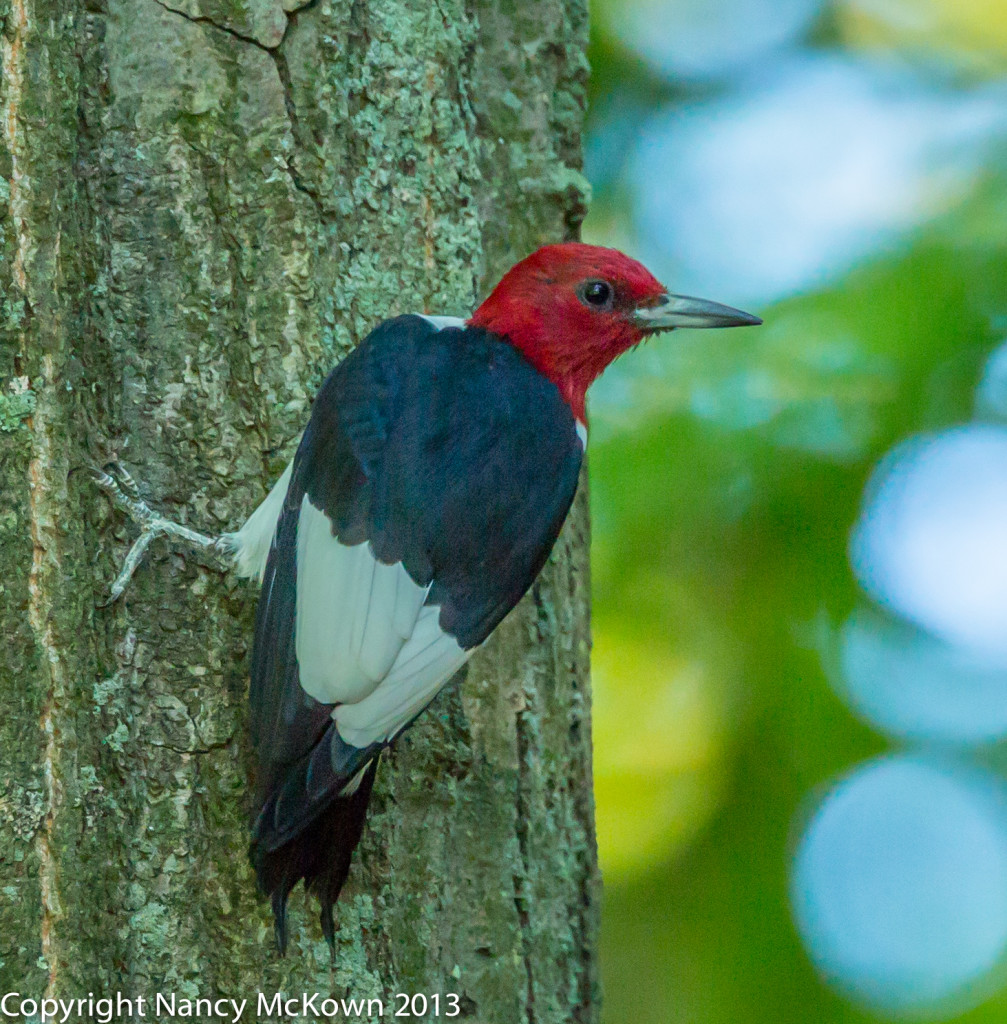The Elusive Red Headed Woodpecker
You don’t see very many red headed woodpeckers around Southwest Michigan.
Rarely, like once every few years, one will visit our feeders. The other woodpeckers, even the big Pileated Woodpecker, are more visible and less cautious then the Red Headed.
Non-birders often mistakenly identify the Red-Bellied Woodpecker as the Red Headed. Big difference. There’s a photo of the red bellied on my “Gallery of Woodpecker Photos” page.
The mature Red-Headed Woodpecker has red feathers covering its entire head. The immature Redheaded resembles the adult, but does not have its distinctive red head. Instead, its head is brown with just a small, faint patch of red feathers on its forehead.

f/5.6; 1/640 second; ISO 3200;
Adult and Juvenile Red Headed Woodpeckers
I was lucky enough to capture both the adult and juvenile Red Headed Woodpeckers one morning in a wooded glen near Lake Michigan. I usually use spot metering when I photograph very small birds (hummers, wrens) and partial metering for average size (robins) birds. On this shoot, I decided to experiment with what is suppose to be the most reliable of the automatic metering systems: Evaluative Metering.
What is Metering?
Photography is about light. All modern cameras are equipped with automatic metering systems that measure light; how much and how strong. Metering is the camera’s Job 1 because without first measuring the light, it can not set the aperture, shutter and ISO to create the proper exposure.
Evaluative metering (It’s called “matrix” metering for Nikon) works by dividing the viewfinder scene into different segments and calculating the exposure of each segment separately. The camera’s computer analyzes the data, throws in extra weight/importance around the focus points, and then, using a super secret algorithm and database comparison system, calculates exposure.

f/5.6; ISO 3200;1/1600 second
Automatic Exposure Compensation Applied
Essentially, the algorithm that calculates evaluative metering is automatically applying exposure compensation (see previous post on exposure compensation: “Photographing Sandpipers on the Beach) by weighing the focusing areas more heavily in its calculations.
This evaluative metering algorithm is NOT applied when the camera is set to the other metering modes: spot metering, partial metering or center weighted average metering. That is why evaluative metering is considered the most reliable of the automatic exposure settings.
Does Evaluative Metering Eliminate the Need to Check the Histogram?
Unfortunately, no.
If evaluative metering is making exposure compensation adjustments based on its computer’s calculations, the photographer will be less likely to have to move the Exposure Compensation dial to adjust ambient light exposure.
But you still should make it a habit to check the histogram. Don’t assume that evaluative metering system has got the exposure under control.
A Tribute to the Red Headed Woodpecker
There was a tribute to the red headed woodpecker painted on a home near where I photographed them. I have included a photograph of that painting below. I can only assume that the owners of this house love these birds as much as I do. Since I don’t have a painting of this bird on my house, probably more.










